AGM-84 Harpoon
SLAM [Stand-Off Land Attack Missile]
The Harpoon missile provides the Navy and the Air Force with a common missile for air, ship, and submarine launches. The weapon system uses mid-course guidance with a radar seeker to attack surface ships. Its low-level, sea-skimming cruise trajectory, active radar guidance and warhead design assure high survivability and effectiveness. The Harpoon missile and its launch control equipment provide the warfighter capability to interdict ships at ranges well beyond those of other aircraft.
The AGM-84D Harpoon is an all-weather, over-the-horizon, anti-ship missile system produced by Boeing [formerly McDonnell Douglas]. The Harpoon's active radar guidance, warhead design, and low-level, sea-skimming cruise trajectory assure high survivability and effectiveness. The missile is capable of being launched from surface ships, submarines, or (without the booster) from aircraft. The AGM-84D was first introduced in 1977, and in 1979 an air-launched version was deployed on the Navy's P-3 Orion aircraft. Originally developed for the Navy to serve as its basic anti-ship missile for fleetwide use, the AGM-84D also has been adapted for use on the Air Force's B-52G bombers, which can carry from eight to 12 of the missiles.
The AGM-84E Harpoon/SLAM [Stand-Off Land Attack Missile] is used for long range land attack precision strikes. The AGM-84E uses an inertial navigation system with GPS, infrared terminal guidance, and is fitted with a Tomahawk warhead for better penetration.
The SLAM-ER (Expanded Response) is an upgrade that is currently in production. SLAM-ER has a greater range (150+ miles), a titanium warhead for increased penetration, and software improvements which allow the pilot to retarget the impact point of the missile during the terminal phase of attack (about the last five miles). About 500 SLAM missiles will be converted to the SLAM-ER configuration between FY 1997 and FY 2001.
At the direction of Headquarters Strategic Air Command, the Harpoon Air Command and Launch Control Set was fully integrated into a fully operational B-52G from Mather AFB, Calif., in March 1983. Three successful live launches at the Naval Air Warfare Center, Point Mugu, Calif., led to the modification of a total of 30 B-52Gs with Harpoon launch control equipment, enough to provide two squadrons of Harpoon-capable B-52Gs by June 30, 1985. The 42nd Bombardment Wing, Loring Air Force Base, Maine, and the 43rd Bombardment Wing, Andersen Air Force Base, Guam, were first tasked to perform the Harpoon mission. Both wings refined tactics and doctrine to merge the long-range, heavy-payload capability of the B-52 with the proven reliability of this superior stand-off attack weapon.
After Loring AFB closed and the retirement of the last B-52G at Castle AFB, Calif., the Harpoon mission was moved to the 2nd Bomb Wing at Barksdale AFB, La. Four B-52H models were rapidly modified (as an interim measure) to accept Harpoon launch control equipment pending B-52H fleet modification. By 1997, all B-52H airframes were Harpoon capable, providing both the 5th Bomb Wing at Minot AFB, N.D., and the 2nd Bomb Wing at Barksdale, full squadron strength capability.
The Navy has proposed replacing the joint program for JASSM with SLAM-ER, prior to completion of the current program definition and risk reduction phase for JASSM. However, the SLAM-ER development and procurement schedule may be excessively concurrent. On the basis of a single controlled flight test, the Navy made a low rate initial production decision that will result in the procurement of approximately 19 percent of the total planned buy of SLAM-ER before the completion of development and operational testing. And flight tests of a SLAM-ER with operational seeker will not be conducted until Development Test II.
Specifications |
||||
| Primary Function: | Air-to-surface anti-ship missile | |||
| Mission | Maritime ship attack | |||
| Targets | Maritime surface | |||
| Service | Navy and Air Force | |||
| Contractor: | Boeing [ex McDonnell Douglas] | |||
| Power Plant: | Teledyne Turbojet and solid propellant booster for surface and submarine launch | |||
| Program status | Operational | |||
| sea-launch | air-launch | SLAM | SLAM-ER | |
| First capability | 1977 | 1979 | ||
| Thrust: | 660 pounds | |||
| Length: | 15 feet (4.55 meters) |
12 feet, 7 inches (3.79 meters) |
14 feet, 8 inches (4.49 meters) |
|
| Weight: | 1,470 pounds (661.5 kilograms) |
1,145 pounds (515.25 kilograms) |
1,385 pounds (629.55 kilograms) |
|
| Diameter: | 13.5 inches (34.29 centimeters) | |||
| Wingspan: | 3 feet (91.44 centimeters) | |||
| Range: | Greater than 60 nautical miles | 150+ miles | ||
| Speed: | 855 km/h | |||
| Guidance System: | Sea-skimming cruise with mid-course guidance monitored by radar altimeter, active seeker radar terminal homing | inertial navigation system with GPS, infrared terminal guidance | ||
| Warheads: | Penetration high-explosive blast (488 pounds) | |||
| Explosive | Destex | |||
| Fuze | Contact | |||
| Development cost | $320.7 million | |||
| Production cost | $2,882.3 million | |||
| Total acquisition cost | $3,203.0 million | |||
| Acquisition unit cost | $527,416 | |||
| Production unit cost | $474,609 | |||
| Quantity | Navy: 5,983; Air Force: 90 | |||
| Platforms | A-6, F/A-18, S-3, P-3, B-52H, ships | |||
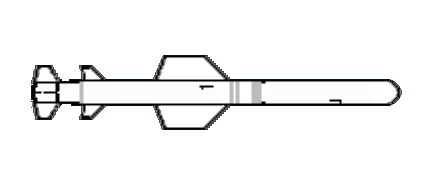
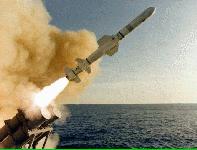
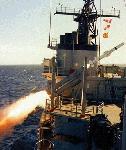
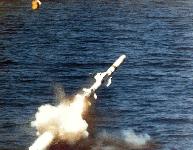
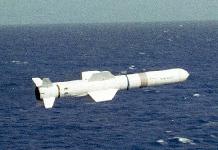
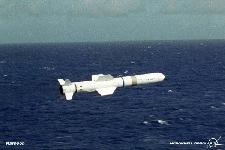
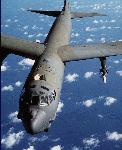
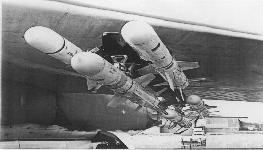
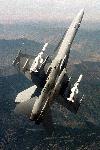
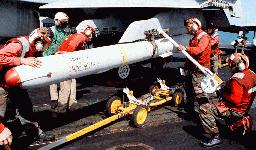
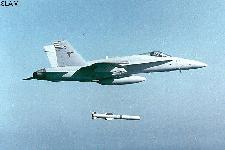
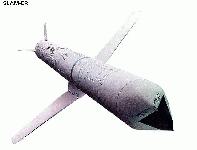
Sources and Resources
- Harpoon
- Standoff Land Attack Missiles (SLAM)
- Standoff Land Attack Missiles Expanded Response (SLAM ER)